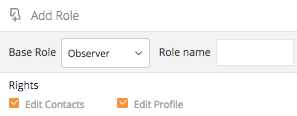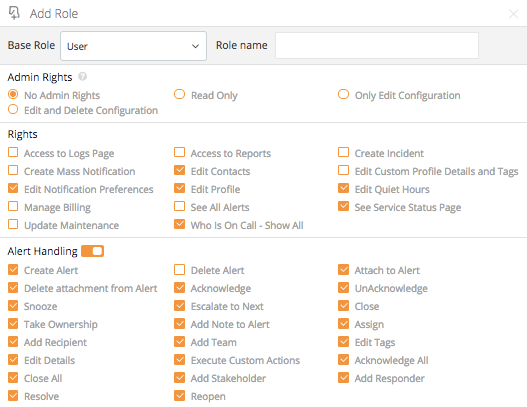Users and User Roles
Any Incident may require the collaboration of other Responder Teams and individuals, in various capacities. For example, managers (across the organization) — in marketing, customer success, communications, or PR — and executives (at any level) may need to know about an Incident and the current status of resolution efforts. Because people are involved in different ways, they need different powers and information. Figuring out what they need — and setting it up for them — is part of preparing for Incidents.
The Service-Aware Incident Management workflow differentiates Roles for Incident Response and adds the Custom User Role tool. These help easily identify and grant permissions for people in an organization, before an Incident. Making these decisions before an incident can save an organization time and eliminate disruptions while resolving an Incident. Recent changes to Roles makes it easy to set up appropriate access permissions — and automate Incident communications for everyone who needs to be involved.
Adding Users
Although there are no changes to the way you add or update users, the new roles are displayed on the Users Dashboard:

Stakeholders
Stakeholders are validated Opsgenie users who may need to know about a problem but who are not actively involved in resolving problems underlying an Incident. Stakeholders may be executives or managers throughout your organization: in Marketing, Service, Communications, PR, Investor Relations, and so on.
Stakeholders:
- Can be added to (and receive) Stakeholder Notification messages
- Can be added to Service Stakeholder Templates and to Incidents in order to receive information about Incidents.
- Can edit their own profiles to update contact methods.
- Can view Incident information and progress on Service Status pages.
Responder Roles
Responder Roles include validated Opsgenie users with User, Admin, and Owner permissions.
User
The User role has become the base Responder role for Incident Response. Responder Users work on restoring impacted services and systems. They work with each other using various collaboration tools, and they share information — in the form of text, notes, images, etc.
Responder Users:
- Can do everything that Stakeholders can do.
- Can participate in On-Call Schedules and Escalations.
- Can take most actions on Alerts and Incidents (if they have been added to a Service Responder Template or Incident as a Responder).
- Only Responder Users who are on the Team that owns an impacted Service (Owner Team) can acknowledge an Incident.
Admin
The Admin Role has not changed for Incident Response.
Owner
The Owner Role has not changed for Incident Response.
Custom Roles
Custom Roles let you define permissions for users who may need access to different kinds of information or other permissions during an Incident.
To create Custom Roles, start with a base role, name it, and then add or restrict permissions by selecting and deselecting permissions to be included in the new role, as shown below.
Creating a Custom Role based on an Observer base role:

Creating a Custom Role based on a Stakeholder base role:

Creating a Custom Role based on a Responder User base role:

Please refer to the User Roles document for more information on default and custom User Roles.
Updated 7 months ago
